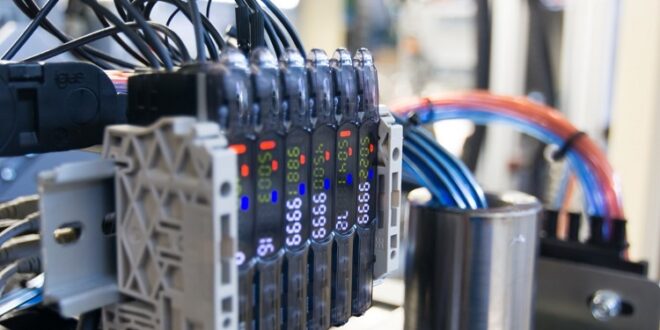According to the National Institute of Standards and Technology, a programmable logic controller finds its way into complex processes. With its wide range of uses, it’s easy to get confused about what this device can accomplish.
So, what is PLC? In short, it’s a device that you can program to accomplish manufacturing tasks.
If you can imagine the intricate parts of an assembly line, you’re already on the right track! But learning about programmable logic controller basics can open up a new world of possibilities. Discover what you can do with this rugged piece of technology in the paragraphs below!
What Does a PLC Do?
Teaching yourself about this device begins with answering the following question: what is a programmable logic controller, and what can it do?
These computers are used for industrial automation to control functions in machines. PLC applications monitor the input and use that data to control the output. As a result of this activity, it can replicate processes while collecting information that can reduce costs.
How Does a Programmable Logic Controller Work?
Programmable logic controller applications operate in a constant loop. The four steps in this process include the following:
Input Scan
First, the PLC will detect the input devices. These physical connections can include digital switches or analog knobs.
Program Scan
Once the PLC knows what’s arriving, it executes the logic provided in its programming. For example, if it knows that something has reached the appropriate temperature, that can trigger a mechanical response.
Output Scan
Next, the output devices for the PLC either energize or de-energize. This step usually triggers a response or suppresses it until the appropriate time arrives.
Housekeeping
At this point, a programmable logic controller checks with its internal diagnostics. This step includes communicating with the program you chose to install.
How Do You Choose the Best PLC?
Since programmable logic controllers have existed since the late 1960s, there’s a wide variety available. Putting budget aside for a moment, you will need to ask yourself the following types of questions:
- Does the system depend on DC or AC voltage?
- How do you want to communicate with the PLC?
- Will you have enough memory to run the program you need?
- Does your design depend on having a network connection?
Other considerations include how you want to communicate with the device and what software to use. The size and placement of the manufacturing project also play critical roles in making this decision. Regardless of how you approach the design, there’s not often a better way to get started than to teach yourself PLC programming.
Ready to Learn More About PLC?
Now that you understand some basics about how a programmable logic controller works, you have a foundation that can build great things. With this device, you can create the next great piece of manufacturing and industry history! But from here on out, you will want to continue learning, especially about the software and programming languages you can use.
Do you want to learn more about those topics from us? Check out more great PLC-related content on our blog today!
 HammBurg Be informed with latest news, reviews, entertainment, lifestyle tips, and much more.
HammBurg Be informed with latest news, reviews, entertainment, lifestyle tips, and much more.




